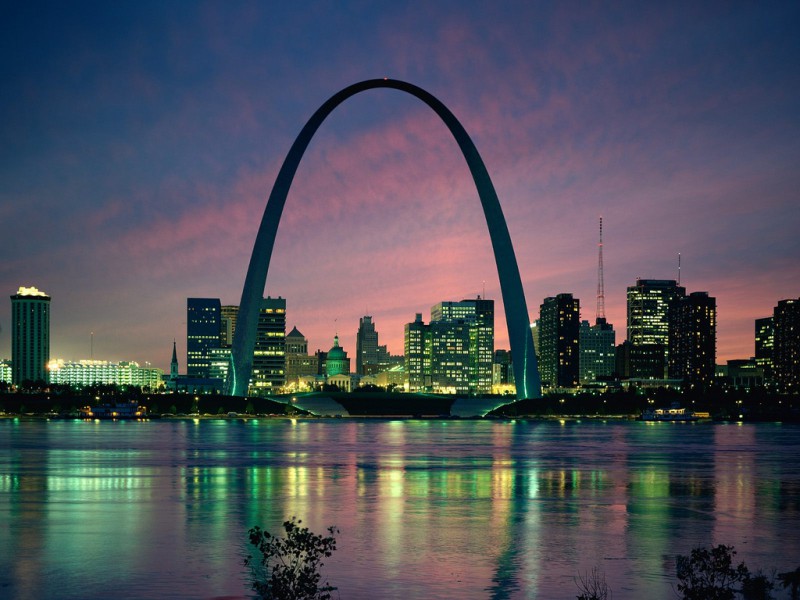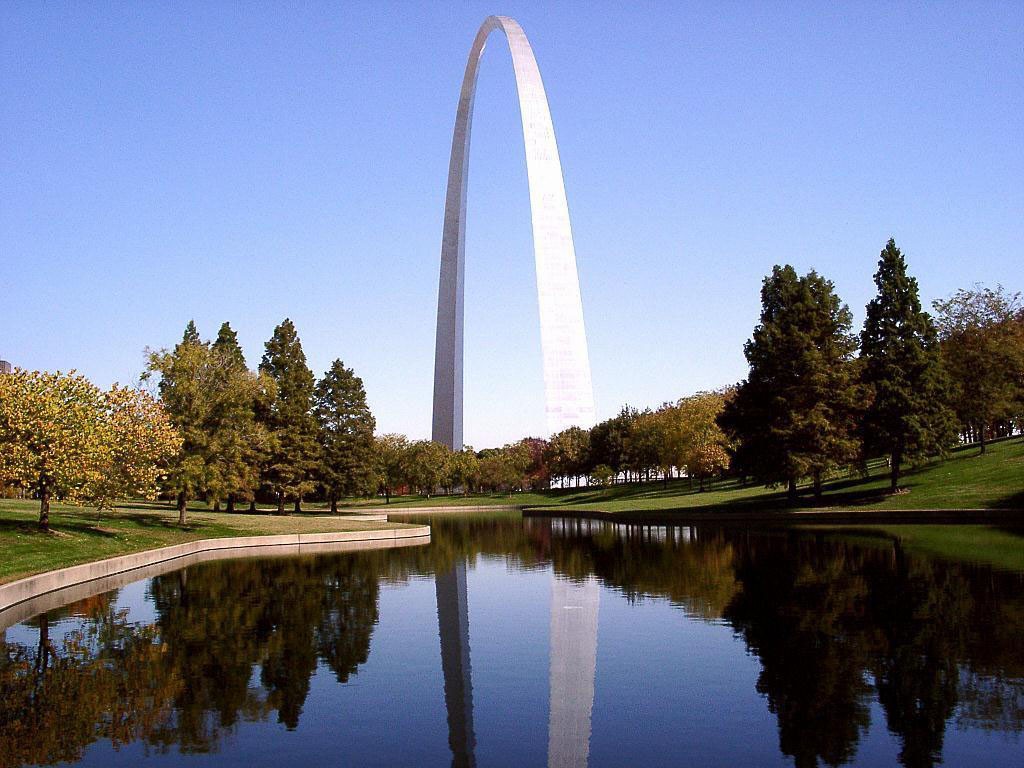The Jefferson Memorial – Gateway Arch
October 3, 2015Seeming to pierce the brilliant blue sky on a sunny day, the magnificent 630-foot-high St. Louis Gateway Arch pays tribute to the Louisiana Purchase of 1803, homage to President Thomas Jefferson, and respect to engineering innovation at its best. The story of the arch begins in the early 1930’s when the mayor of St. Louis and a group of community leaders proposed a riverfront memorial to commemorate the city’s role in the westward expansion of the United States. However, it wasn’t until 50 years ago today—October 28, 1965—that the keystone was set to complete the memorial.
The project was interrupted when the United States became involved in World War II and resurfaced in 1947 when the Jefferson National Expansion Memorial Association sponsored a competition asking entrants to create a design that included an architectural memorial; reproductions of the types of buildings found in Old St. Louis; a campfire theater where programs could be given by park rangers; and restaurants, museums, and parking facilities. The many competitors included both Eero Saarinen and his father, Eliel, but the elder Saarinen’s submission was no match for the daring and spectacular arch suggested by his son, a unanimous choice of the competition’s jury.
In order to turn his vision into a reality, though, Saarinen needed the help of a structural engineer. He turned to Severud Associates (then known as Severud-Elstad-Krueger Associates) and asked Fred Severud, with whom he and his father had previously worked, to do a feasibility study. Once Severud determined that the structure could be built, his colleague, Hannskarl Bandel designed a weighted catenary to form the shape of the arch that Saarinen envisioned. This curvature allows the structure to carry most of its gravity loads in pure compression with no significant lateral thrust at its foundation.

The arch, which is of equal span and height, is an equilateral triangle in section, the sides of which taper from 54 ft. wide at the base to 17 ft. at the peak. The tubular section, which is torsionally stable and creates an interior space for the observation platform, tramway, and mechanical systems, is formed with a stressed orthotropic skin composed of two layers of steel separated by a gap, which also varies in width.
The outer layer is made from stainless steel to protect the structure from weather and to provide the gleaming metallic finish desired by the architect. The inner layer and the intermittent stiffeners connecting it to the outer layer are made from carbon steel. To resist lateral loads (and the unbalanced dead weight of each separate leg during construction), the gap between the inner and outer steel skins is filled with post-tensioned concrete to a height of 300 ft. The cutting-edge design limits the arch to a lateral deflection of only 18 inches at its apex in winds of up to 150 mph.
Working together, three masters of architecture and engineering—with the help of many colleagues—used their ingenuity to create a seemingly impossible structure that has been a national icon for 50 years. Innovation continues to be a hallmark of Severud Associates’ structural designs as evidenced by Madison Square Garden in New York City, the Crystal Cathedral in Garden Grove, California, and the roof of the Jeppesen Terminal at Denver International Airport in Colorado.
